How To Make Bulgarian Style Yogurt At Home
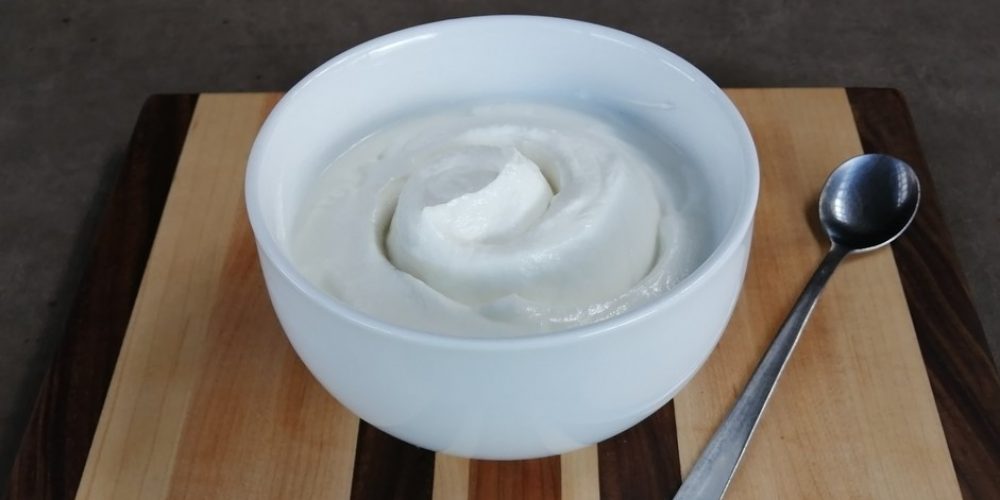
Bulgarian style yogurt originates in Bulgaria of eastern Europe. Similar to Greek yogurt it is high in solids and much thicker than regular yogurt. Unlike Greek yogurt, it doesn’t have extra fat added. Bulgarian style yogurt is drained in a cheese bag, which results in higher dry matter.
If you have tried our Quark recipe, you will see similarities. The difference to Quark is that Bulgarian style yogurt doesn’t use any rennet, just yogurt culture. This yogurt style works best with cow or sheep milk, it is challenging to make with goat milk.
Typical yogurt culture contains 2 strains of bacteria: Streptococcus Thermophilus and Lactobacillus Bulgaricus. The “Bulgaricus” strain originates in Bulgaria and is a hundreds of years old culture strain, used in pretty much all yogurt types.
Like all live yogurt, Bulgarian style yogurt is a probiotic. Due to its lower moisture content, it is very effective and the number of probiotics per tbsp is higher than in regular yogurt.
Check out our post on How to Make Cheese at Home to learn the art of making cheese. It’s a fun project for everyone.
For easy homemade cheese recipes check out our Cheese Making Recipes page.
If you are interested in the world of cheese making, visit our cheese Resource page and our How Cheese is Made post.
We review and suggest Cheese Making Kits here if you would like to get started with making cheese.
Enjoy!!!
How To Make Bulgarian Style Yogurt
Ingredients:
- 2 L/ 2 qt of milk
- ¼ tsp of yogurt culture, you can order it here.
- Instead of freeze-dried yogurt culture, you can use 1 tbsp of an active yogurt as a starter culture. Make sure it is a yogurt that contains live bacteria
Procedure:
- Heat the milk to 90 C/ 190 F. Stir constantly.
- Keep it at that temperature for 15 minutes.
- Fill cold water into the kitchen sink and place the pot with the hot milk into it.
- Under constant stirring cool the milk to 45 C/ 108 F.
- Add the yogurt culture and stir it in.
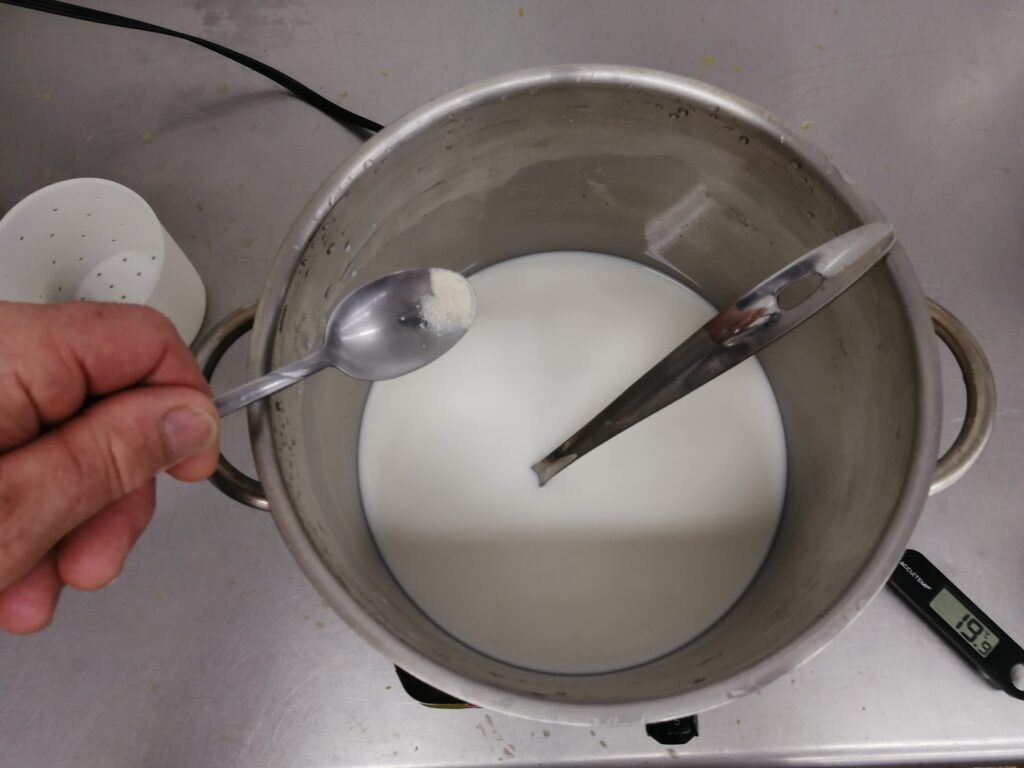
Adding freeze -dried yogurt culture to the milk
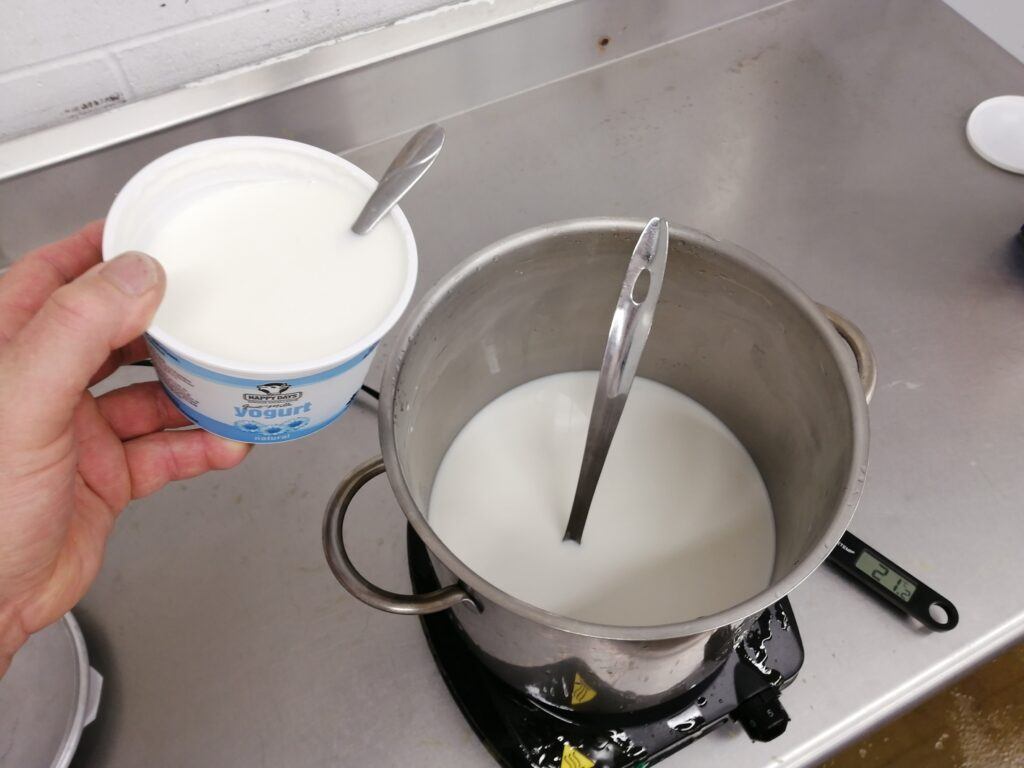
Adding yogurt with live bacteria to the milk
- If you have a yogurt maker, place the milk into the containers, or the bulk container if you have a bulk option.
- If you don’t have a yogurt maker, cover the pot and place it in a warm place. Ideally, the temperature of the milk shouldn’t drop below 38 C/100 F. To achieve that you can cover the pot with plastic and a blanket, or you can place it into your stove with the “warm” setting. Check the stove temperature so it doesn’t get above 50 C/ 120 F.
- If you manage to keep the ideal temperature, the acidity will drop within 6 hours. If you have a pH meter, the pH should be at 4.5 or lower. If you don’t have a pH meter, make sure the milk became firm and tastes sour. It is important that the acidity has developed. If you are not sure, rather leave it too long than not long enough.
- Place the coriander in the kitchen sink and line it with cheesecloth. With the ladle gently scoop the yogurt into the cheesecloth.
- You can let the yogurt drain in the coriander, or you can tie the cloth and hang it.
- The longer you let it drain the firmer the yogurt will get. I find a 2-hour drain will yield a nice yogurt, but you can experiment with it on your own terms.

Scoop the acidified yogurt into a cheesecloth
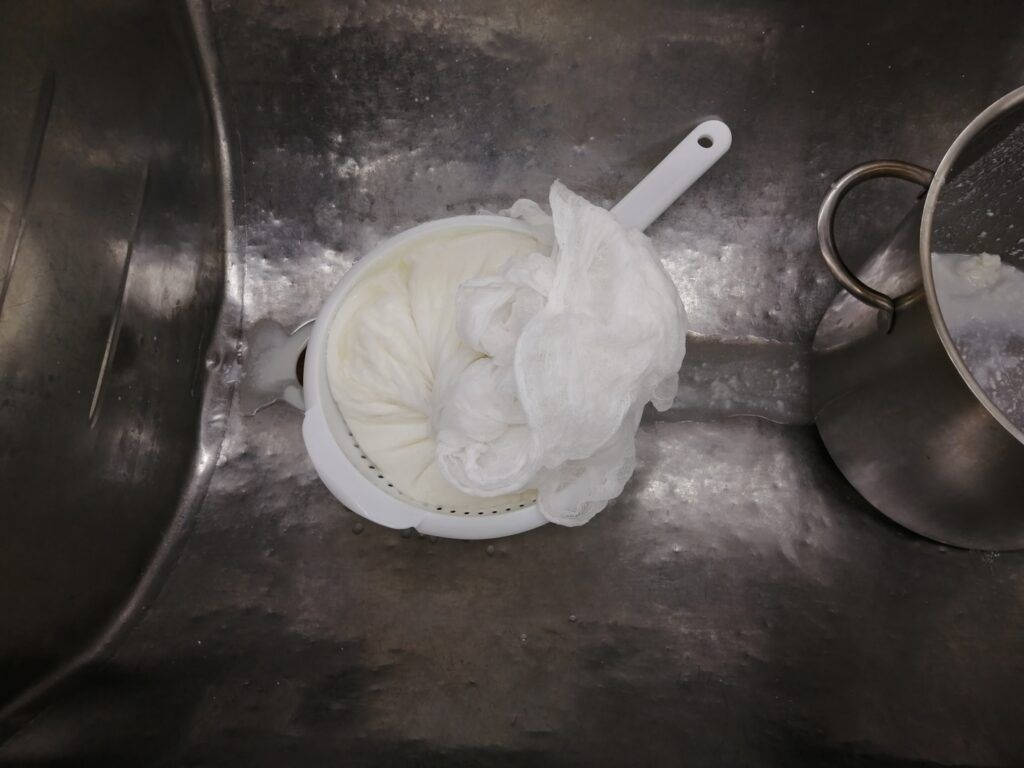
Let the yogurt drain in the cheesecloth until it reaches the desired dryness
- Transfer the yogurt into a bowl and refrigerate. It is now ready for consumption.
- If you want to continue to make your own yogurt, you can use your homemade yogurt as a starter culture for the next batch.
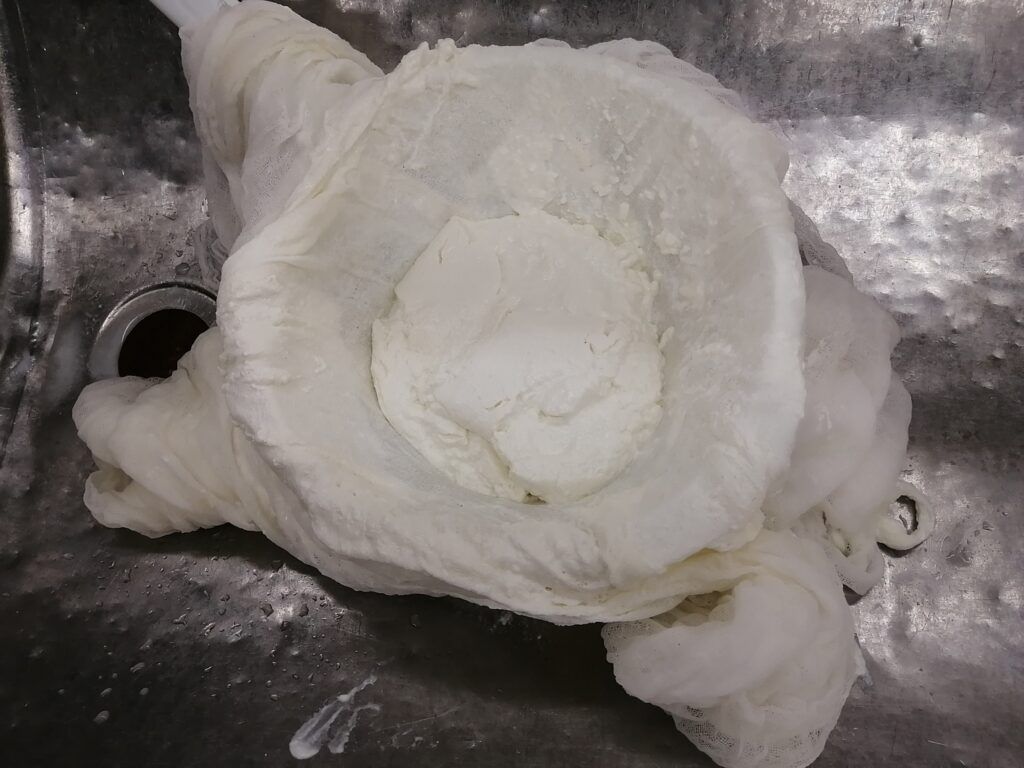
The yogurt has drained and is ready to be refrigerated
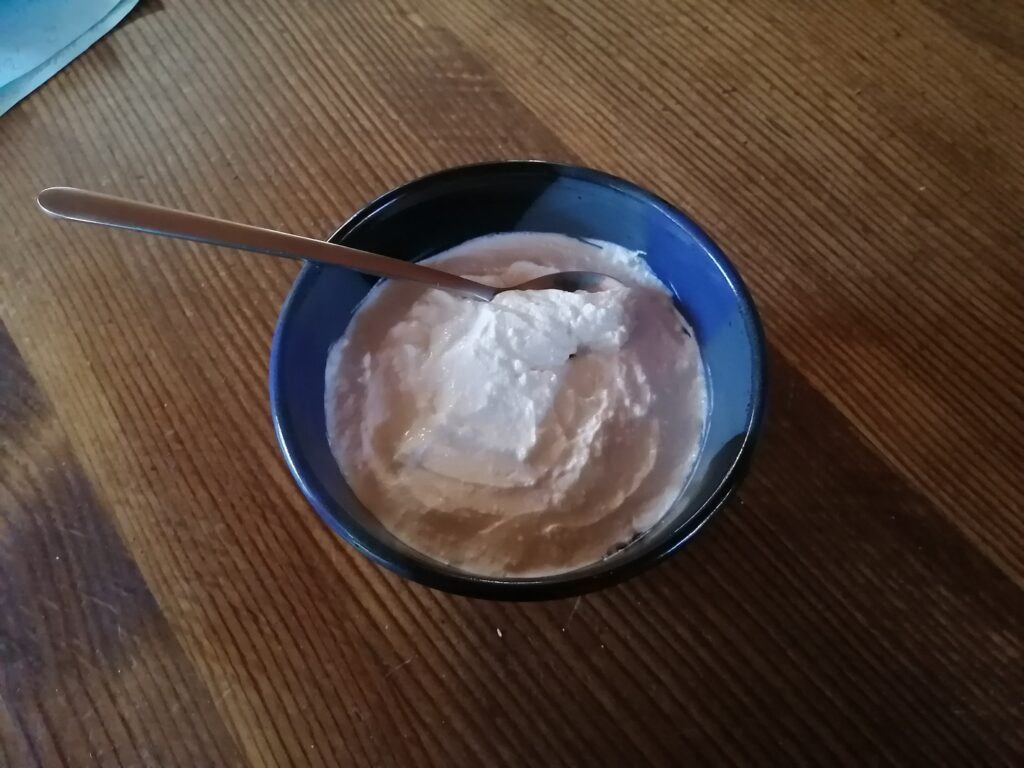
The yogurt is ready. See below ideas what to do with Bulgarian style yogurt
Ideas on how to use Bulgarian style yogurt:
- On baked potatoes instead of sour cream
- In salad dressings
- With fruit
- With honey, maple syrup or jam
- With salt, garlic, and herbs as a veggie dip
- With cereal, oatmeal or granola
Troubleshoot
1.The yogurt is not thickening. This is the case when no acidification or slow acidification happens, which can have 3 reasons:
- You added the yogurt culture too early when the milk was still too hot. That can happen if your thermometer is not accurate. Don’t add the culture as long as the milk is over 50 C/ 120 F.
- Your yogurt cooled down too fast. The yogurt should keep a temperature of 38 C/ 100 F minimum during the first 2 hours.
- Your yogurt culture was not active. That can happen when you used a store bought yogurt that didn’t contain live bacteria, or was close to expiry and the bacteria were not active enough anymore. Or your freeze dried culture lost its activity due to not being kept in the freezer, or it has expired.
If this happens, give the yogurt more time. Even at room temperature, if there’s any bacterial activity, it can eventually come around.
- The yogurt has an unpleasant taste.
- You didn’t use fresh milk.
- Your tools were not clean
- You exposed the milk to direct sunlight or fluorescent light.
3. The yogurt starts to mould after a few days. Mould spores are airborne. Clean your yogurt containers thoroughly before filling the yogurt in them.
Leave us a comment below about how your recipe turned out. Feel free to suggest ideas or what you would like to see in our recipes.
Enjoy!!!




